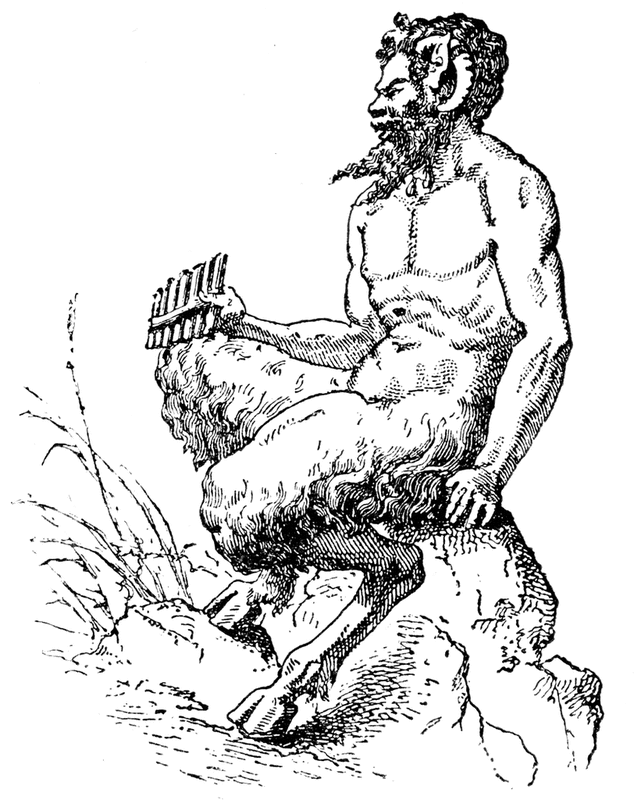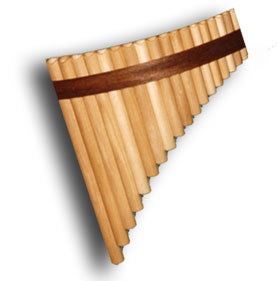|
The Pan Flute by Teresa Martin--@Teresa__Martin The Once episode “Nasty Habits” featured the story of the Pied Piper with Peter Pan being the man who used “unholy music” to lure children into becoming Lost Boys. This inspired admiration among the fandom for the haunting tune by Mark Isham. Talk also erupted of the featured wind instrument, the pan flute, and inspired a deeper look at the rich history behind its deceptively simple setup. As a wind instrument, the pan flute developed later than the percussion instruments which are associated with the eldest of humanity’s ancestors. More ancient because the making and playing of them is more natural to the human instinct—hitting an object against another--and simple. The winds were not far behind, also being somewhat natural, as they are played by blowing through a tube. They likely developed when people blew into bamboo sticks and learned to pitch them by length. There is no particular place where the pan flute developed; rather it is recorded as being found from archaeological works dated as early as the Neanderthals, to the written works of antiquity all over the world. These were made from natural materials, in particular hollow wood. Reeds were also made into pan flutes hence leading to the reason the instrument got its name from the Greek god Pan (White). Pan’s myth includes the story of how he fell in love with a nymph named Syrinx and chased her. In attempting to escape him, she turned herself into reeds which created a melancholy tune when the wind blew. The Greeks still call the instrument a syrinx, after the nymph, while other countries name it after the god. Being a “stopped” wind instrument, the pan flute has a unique mellow sound. This is created because the top, where the player blows, is open, while the bottom is closed. There is no set number of pipes that the flute can have. Douglas Bishop hypothesizes in his article “A Worldwide History of the Pan Flute” that the instrument began as a single pipe, a tradition still held by Native American and Papua New Guinea tribes. He further documents that the pan flute in its most current form was discovered 2500 B.C. in the areas surrounding the Aegean Sea. Moreover, Bishop notes that the great Roman poet Ovid not only observed the use of the pan flute among shepherds, but included it in his masterpiece “Metamorphoses,” and quotes from the work: Sitting on the riverbank, Pan noticed the bed of reeds was swaying in the wind, making a mournful moaning sound, for the wind had broken the tops of some of the reeds. Pulling the reeds up, Pan cut them into pieces and bound them together to create a musical instrument, which he named "Syrinx", in memory of his lost love (Bishop). Yet it is the mythological roots behind the creation of the pan flute which gives special meaning to Once’s version as it makes explicit that Peter Pan is indeed, as my colleague Lori Fitzgerald noted, “. . . more like the Pan figure of mythology, a wild creature who often created chaos and fear (hence the words “panic” and “pandemonium.”). Before, Peter Pan had the behavior of the god, and then, with “Nasty Habits,” he claimed the instrument bearing his name as his own unique method of calling the Lost Boys away from their homes. This haunting sound resounded anew for contemporary audiences as the sound rang in the misery of the parents who lost their boys in Once Upon a Time. Hence Once has created a wider audience for this instrument, just as it has for stories that may have been forgotten by many otherwise. For those who were first introduced by this episode and wish to learn more, numerous websites, ITunes and other recordings, particularly in the folk genres, or even one’s own ethnic traditions, can be accessed easily ensuring that this ancient instrument sings on. Works Cited
Bishop, Douglas. "A Worldwide History of the Pan Flute." Panflutejedi.com. N.p., n.d. Web. Fitzgerald, Lori. "Heart of the Truest Believer Roundtable." Onceuponafans.com. N.p., n.d. Web. White, Brad, and Costel Puscoiu. "History of the Pan Flute." Pan-Flute.Com. N.p., n.d. Web.
0 Comments
Leave a Reply. |
OriginsExplore the Arthurian legend surrounding Lancelot, take a trip into the woods to discover the mythology behind Red Riding Hood or learn more about a modern day hero called Snow White. Origins provides unique insights and perspectives from talented writers into the characters we know and love, going far beyond the boundaries of Storybrooke. Archives
August 2016
Categories
All
|



